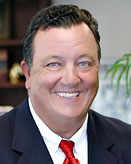 I found these great marketing tips in Ken Hardison's excellent book How to Effectively Market Your Personal Injury Law Practice (Copyright 2009, all rights reserved). Ken is a personal injury lawyer based in Dunn, North Carolina and is the chairman of PILMMA, the Personal Injury Lawyers Marketing and Management Association.
I found these great marketing tips in Ken Hardison's excellent book How to Effectively Market Your Personal Injury Law Practice (Copyright 2009, all rights reserved). Ken is a personal injury lawyer based in Dunn, North Carolina and is the chairman of PILMMA, the Personal Injury Lawyers Marketing and Management Association.
CLIENT TURN-OFFS:
Client turn-offs arise when employees (and I mean both lawyers and non-lawyers) fail to communicate well, both verbally and non-verbally. Some examples of client turn-offs are:
- Failure to greet or even smile at a client.
- Failure to see the client on time.
- Inaccurate information given or lack of knowledge conveyed.
- Failure to give full attention to the client either while on the phone or when meeting them in person.
- Rude or uncaring attitude.
- Inappropriate, dirty, or sloppy appearance at the workplace.
- Any communicative message that causes the client to feel uncomfortable.
Surveys completed by the U.S. Office of Consumer Affairs revealed these interesting facts:
- One client in four is dissatisfied with some aspect of a typical transaction.
- Only 5% of dissatisfied clients complain to the company. The vast silent majority would rather switch than fight. They simply take their business elsewhere.
- A dissatisfied client will tell 10 to 20 people (12 is the average) about a company that provided poor service. Some people will tell hundreds or even thousands.
How does this affect our business?
If 25% of our clients are unhappy or unhappy with our service, but only 5% of that 25% bother to complain, the impact can be devastating.
Let's take a typical injury law firm that signs up 1000 clients per year. If 250 clients are unhappy but we hear from only 5% of that 250, which is approximately 13, that may sound good to everyone until they realize that the 237 quiet ones are likely to tell 2,844 people (237 x 12 = 2,844). Adversely, if a client is completely satisfied, he might tell 1 to 3 people or an average of 2.
In 2004, my statistics showed me that there were three major sources of clients in my firm, and it broke down as follows:
- 421 cases or 41% were TV
- 140 cases or 14% were from our website
- 340 cases or 33% were from personal referrals
Now let me tell you the cost of getting those referrals. In real dollars, TV cost about $900 per client. The website cost approximately $500 per case to get them in the front door. And last but not least, personal referrals cost absolutely nothing. Which type of referral do you think I want?
What is also important to note is that of the 340 personal referrals that we signed up, we received only 823 referrals, which means that we had a 41% success rate in signing up personal referrals.
- In TV advertising, we had 2,333 calls and signed up 421 new cases. This was a conversion rate of 18%.
- Our website yielded 1,268 inquiries and only 140 sign-ups, which is only an 11% conversion rate.
You can clearly see that the personal referrals are already sold on our services when they seek us out. They’re not just shopping around for attorneys or trying to find out information. They come to us wanting our services. This also costs the firm less time and money in converting these calls to actual cases. Now I ask you, which do you think is the most cost effective form of marketing we do in the firm and also yields us the greatest conversion rate? It is clear…the personal referrals from our past clients and people we do business with.
Now let's go to the actual dollar cost of an unhappy client. As I stated earlier, out of 1000 clients, if we go by the national average, we have about 250 unhappy clients. Of those 250 clients, 95% never express discontent, but also never come back or refer any clients either. Thus, we have 237 people who could have spoken to at least 474 people and referred us, which on the average would have converted 41% or 196 clients. In actual costs, just look at the following:
If we had to replace these clients with TV advertisements, the cost would be $176,400. But better yet, let's think of the lost income. If we average $4000 a fee and we lose 196 potential clients, then we have lost approximately $800,000 in revenue for the year.
Donald Rohan, a LexisNexis Territory Account Manager, posts an insightful piece geared toward personal injury attorneys.
 I found these great marketing tips in
I found these great marketing tips in 


